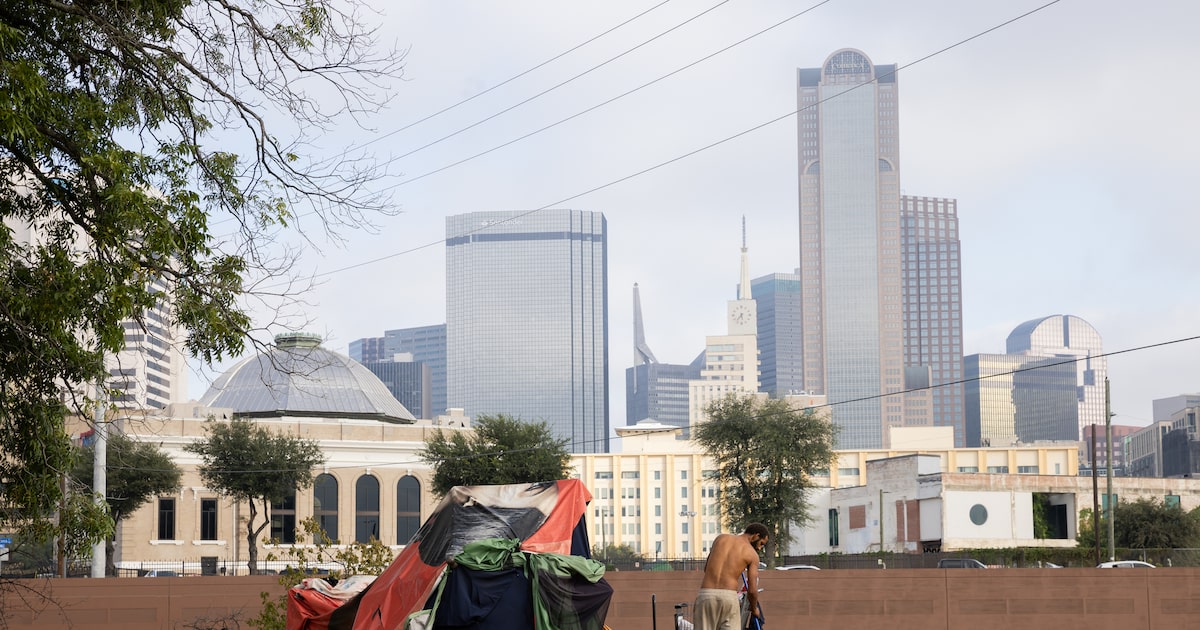Homelessness is a national crisis. Just about every large city in the United States is dealing with it, and no one has a perfect solution. That’s why Dallas should redouble its efforts to assess multiple strategies for dealing with the problem.
City Council members on Tuesday heard a briefing from Haven for Hope, a large homeless shelter in San Antonio. Alongside partners, it offers sleeping space and assistance with housing, education, employment and other areas.
A Haven for Hope representative told council members that the shelter has capacity for 1,350 people to sleep inside every night, and that many services are co-located so clients can easily access them.
City officials should learn more about Haven for Hope before trying to replicate a large-scale shelter like that in Dallas. Still, there’s no denying Dallas needs to supplement its existing strategies. City Hall has been too slow to consider, much less adopt, new methods to get people off the streets.
Opinion
Here in Dallas and Collin counties, some 700 households become homeless every month, said Housing Forward President and CEO Sarah Kahn. Housing Forward is the region’s lead homelessness response agency.
Dallas has about 2,400 overnight beds for the homeless, Kahn said. There are several shelters across the city. While some are consistently full, others aren’t, she said.
The fact that we have open shelter beds signals to us that Dallas needs to act more urgently.
As Dallas looks for ways to enhance its homelessness response, it should start from a simple principle: We can’t allow people to camp in public places, whether they’re on a street corner or in the shadows of the Great Trinity Forest. Police officers and other city staff need to move people along.
That may seem harsh, but it’s far more humane than leaving people to live in squalor and lawlessness that only deepens their struggle and often exposes them to violence. Refusing to abide public camping and requiring constant movement can push people to accept help.
On Tuesday, Gov. Greg Abbott announced an operation for “relocating homeless individuals and removing encampments” in Austin. We can generally support the idea of moving homeless people out of public spaces as fast as possible. Plus, Abbott stated in a news release that “Texas has arrested numerous individuals for a variety of criminal offenses.” No city should tolerate crime.
But according to The Texas Tribune, it isn’t clear what exactly the state is doing with all the people officials are moving. And that gets us into the other part of this homelessness problem. Our efforts to clear streets of encampments will fall short if we don’t have enough beds and a strong network of services to help people transition to stable lives.
Kahn said the biggest gap is in rental assistance and comprehensive support services people need as they are moved off the street. The state Legislature and the federal government should do their part by investing heavily in mental health care and addiction recovery and housing for the homeless.
We say all this with the acknowledgement that we’ll never truly end homelessness. What we face as a society is the perpetual work of finding the best ways to manage it.
That’s why Dallas shouldn’t tolerate encampments and remain open to different models of temporary and permanent housing. That could mean pallet homes, added space in traditional shelters or any number of other ideas. We need solutions in between encampments and permanent housing — places that are orderly and clean and connected to services.
None of this is to say that Dallas should abandon its current efforts, which have seen some success in recent months. Since the launch of a new safety plan downtown, we have seen more police and fewer people sleeping on the streets in the central business district.
Still, there’s a lot of work to do throughout the city. As of this writing, Dallas had received over 1,000 homeless service requests through 311 in the last 30 days, according to a city dashboard. These range from complaints about human feces to reports about large encampments.
And the progress hasn’t extended to South Dallas, said Ken Smith, president of the nonprofit Revitalize South Dallas Coalition.
“It definitely has gotten worse,” he said. “The South Dallas population in homelessness has increased significantly.”
The focus on downtown is necessary to ensure businesses stay and residents are safe, but Dallas mustn’t lose sight of homelessness in other parts of the city. That’s doubly true for southern Dallas, which has been sidelined for so many generations.
Dallas has made progress with its existing strategies to address homelessness, but these efforts are not enough. Dealing with homelessness will require a serious investment at every level of government and a willingness to attempt many different ideas. Our hope is that Dallas will become a national leader.

